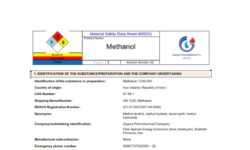Understanding Ford Diagnostic Trouble Codes: P0430 Code Ford
When it comes to diagnosing issues with your Ford vehicle, understanding the diagnostic trouble codes (DTCs) is essential. These codes provide valuable insights into the problems affecting your vehicle’s performance. Among the various codes, the P0430 Code Ford, P1000 Code Ford, and P0125 Ford F150 Code are common indicators of specific issues that drivers might encounter. Let’s dive deeper into each of these codes, what they mean, their symptoms, and how to address them effectively.
What is the P0430 Code Ford?
The P0430 Code Ford indicates that the catalytic converter for bank two is not performing as efficiently as it should be. This issue often arises when the converter fails to convert exhaust gases effectively, leading to increased emissions and potential performance issues.
Symptoms of the P0430 Code Ford:
- Check Engine Light: The primary indicator that something is wrong.
- Poor Engine Performance: Drivers may notice a decrease in power or acceleration.
- Increased Emissions: If not addressed, this issue can lead to a failed emissions test.
- Unusual Noises: A failing catalytic converter might produce rattling noises.
Diagnosis and Repair:
To resolve the P0430 Code Ford, a technician will typically follow these steps:
- Diagnostic Scan: Using an OBD-II scanner, the technician confirms the code and checks for any additional codes that may be related.
- Visual Inspection: Inspect the exhaust system, focusing on the catalytic converter and its connections.
- Oxygen Sensors: Check the performance of the upstream and downstream oxygen sensors.
- Replace Faulty Components: If necessary, replace the catalytic converter or the related sensors to restore efficiency.
Understanding the P1000 Code Ford
The P1000 Code Ford is a manufacturer-specific code that indicates the OBD-II system has not completed its self-diagnostic tests. This can happen for various reasons, such as the battery being disconnected or a recent reset of the vehicle’s computer.
Symptoms of the P1000 Code Ford:
- Check Engine Light: Illuminates to inform the driver that the system is incomplete.
- Failed Emissions Testing: If the monitors aren’t ready, the vehicle may not pass emissions tests.
Diagnosis and Repair:
To fix the P1000 Code Ford, drivers can take the following steps:
- Drive Cycle: Often, simply driving the vehicle for a certain distance allows the OBD-II system to complete its tests.
- Monitor Readiness: After a drive cycle, check the readiness monitors using a diagnostic tool to ensure all systems are operational.
- Address Other Codes: If additional trouble codes are present, those issues must be resolved before the P1000 code can be cleared.
What is the P0125 Ford F150 Code?
The P0125 Ford F150 Code signifies that the engine is not reaching the desired temperature within a specific timeframe. This issue usually involves the engine coolant temperature sensor or the thermostat.
Symptoms of the P0125 Ford F150 Code:
- Check Engine Light: Indicates an underlying problem in the engine’s temperature management system.
- Poor Fuel Economy: The engine may run richer than necessary, leading to increased fuel consumption.
- Rough Idle: Drivers may experience an unstable idle, impacting driving comfort and performance.
Diagnosis and Repair:
To diagnose and resolve the P0125 Ford F150 Code, mechanics typically:
- Diagnostic Scan: Use an OBD-II scanner to confirm the presence of the P0125 code and check for related codes.
- Inspect the Coolant Temperature Sensor: Ensure that it is functioning correctly and is properly connected.
- Thermostat Check: Test the thermostat to confirm it is opening and closing as intended.
- Replace Components: If the temperature sensor or thermostat is faulty, they should be replaced to restore proper engine function.
Understanding diagnostic trouble codes like the P0430 Code Ford, P1000 Code Ford, and P0125 Ford F150 Code is vital for maintaining your vehicle’s health. Recognizing these codes and their implications can help you address issues before they escalate into more significant problems. If you encounter any of these codes, it’s recommended to consult a qualified mechanic for accurate diagnosis and timely repairs. Regular vehicle maintenance and awareness of these codes will ensure that your Ford remains reliable and efficient for years to come.



